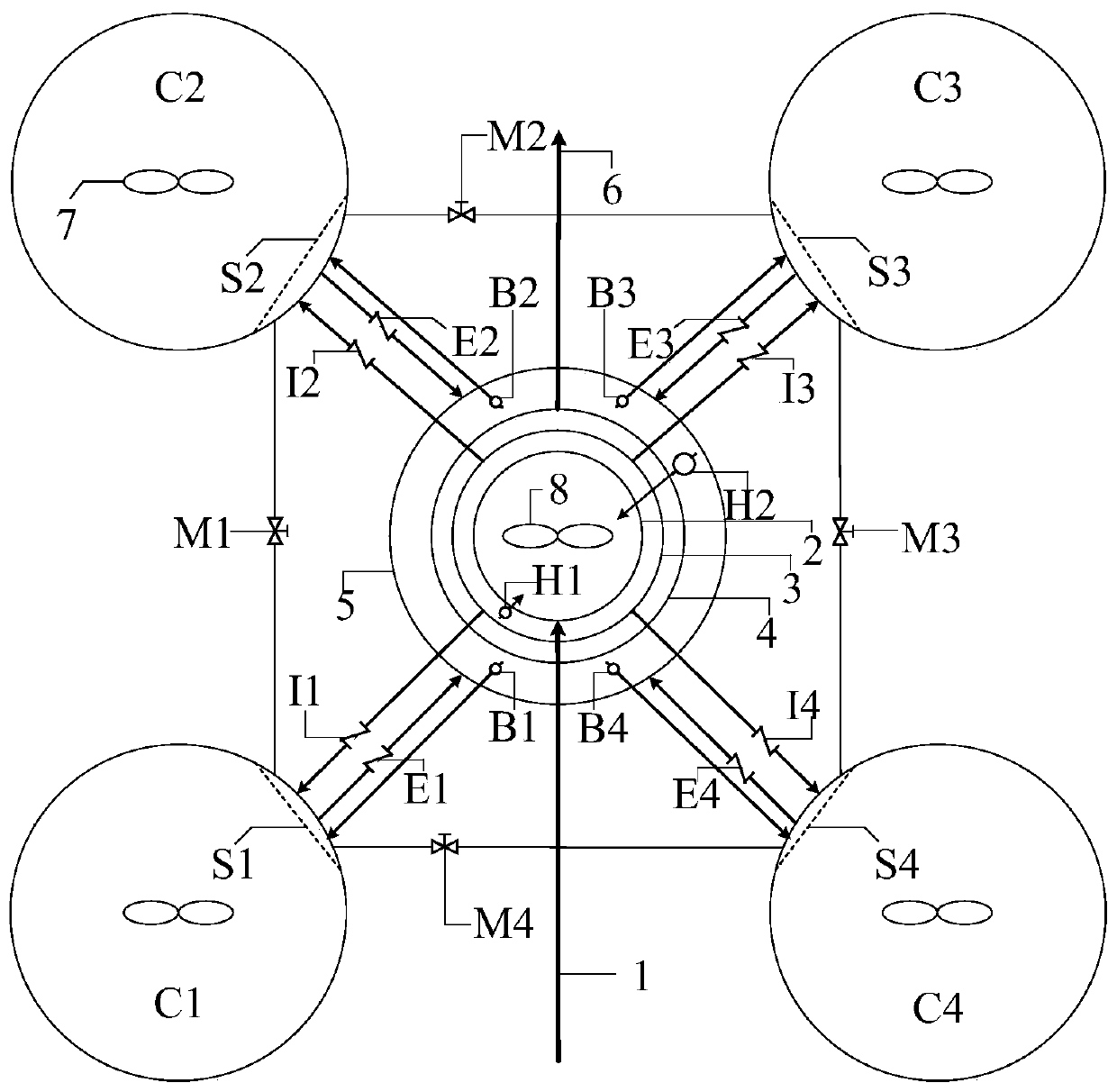Rapid start-up method for high-efficiency autotrophic denitrification system for treating high-ammonia nitrogen wastewater
An autotrophic denitrification and quick-start technology, applied in sustainable biological treatment, water treatment parameter control, chemical instruments and methods, etc., can solve the problem of filler sedimentation, obstruction of fluidization, large-scale expansion of projects with high inoculation difficulty, etc. question
- Summary
- Abstract
- Description
- Claims
- Application Information
AI Technical Summary
Problems solved by technology
Method used
Image
Examples
Embodiment 1
[0121] The high-concentration ammonia-nitrogen wastewater produced in the production process of a bioengineering company is used as the system feed water, with a water volume of 3000m 3 / d, pH average 7.9, water temperature average 32°C, influent COD concentration average 2500mg / L, BOD 5 The average concentration is 1500mg / L, the average ammonia nitrogen concentration is 800mg / L, the average nitrous nitrate concentration is 2.0mg / L, and the average alkalinity (calculated as CaCO 3 total) 5000mg / L, the total effective volume of the reaction pool is 800m 3 , the effective volume of the denitrification tank is 800m 3 , the influent enters the four reaction pools C1-C4 through the denitrification pool.
[0122] In preparation for start-up, a suspension carrier is added to each reaction tank and denitrification tank, and the effective specific surface area of the carrier is 800m 2 / m 3 , with a porosity of 90%, in line with the industry standard of "High Density Polyethylene ...
Embodiment 2
[0131] The sludge digestion solution used in the test is the dewatered filtrate after sludge digestion in a sewage treatment plant. The sewage treatment plant adopts the medium temperature anaerobic digestion process to treat the sludge, and the solid content of the sludge is 10%. Water volume 2000m 3 / d, pH value 7.8-7.9, average water temperature 30°C, average influent COD concentration 810mg / L, BOD 5 The average concentration is 620mg / L, the average ammonia nitrogen concentration is 560mg / L, and the total effective volume of the reaction pool is 400m 3 , divided into four reaction pools on average, and the effective volume of each reaction pool is 100m 3 , effective volume of denitrification pool 100m 3 , Influent water enters four reaction pools C1-C4 after passing through the denitrification pool.
[0132] In preparation for start-up, a suspension carrier is added to each reaction tank and denitrification tank, and the effective specific surface area of the carrier i...
PUM
| Property | Measurement | Unit |
|---|---|---|
| clearance rate | aaaaa | aaaaa |
Abstract
Description
Claims
Application Information
 Login to View More
Login to View More - R&D
- Intellectual Property
- Life Sciences
- Materials
- Tech Scout
- Unparalleled Data Quality
- Higher Quality Content
- 60% Fewer Hallucinations
Browse by: Latest US Patents, China's latest patents, Technical Efficacy Thesaurus, Application Domain, Technology Topic, Popular Technical Reports.
© 2025 PatSnap. All rights reserved.Legal|Privacy policy|Modern Slavery Act Transparency Statement|Sitemap|About US| Contact US: help@patsnap.com


